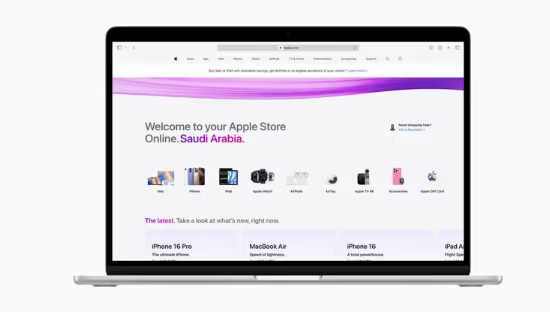
Roaming Costs, Signal Woes & Setup Hassles: What Travelers Really Hate About Mobile Data
When it comes to mobile connectivity while traveling, frustrations are far too common. Whether it’s the pain of setting up a new SIM, the endless maze of roaming plans, or that dreaded “No Service” screen while trying to book a cab in a new city, we’ve all been there. roaming charges while traveling
To get to the heart of what bothers travelers most, we recently ran a poll on Alertify and a shorter one-day version on LinkedIn. The results were clear and surprisingly consistent across both platforms: the cost of roaming still overshadows all other frustrations when it comes to mobile data while traveling.
Let’s break down the numbers.
Poll Results at a Glance
From our own audience poll:
| Alertify Poll | LinkedIn Poll |
|---|---|
| Expensive roaming charges: 46.15% | Expensive roaming charges: 75% |
| Weak or unreliable signal: 23.08% | Weak or unreliable signal: 17% |
| Complicated setup process: 15.38% | Complicated setup process: 8% |
| Finding the right plan: 15.38% | Finding the right plan: 0% |
The takeaway? Travelers are overwhelmingly tired of roaming fees—and many aren’t happy with signal strength either.
Why Are Roaming Charges Still a Problem?
Roaming charges feel like a relic of the past, yet they’re alive and well—especially outside of the EU. Many travelers report receiving bills of hundreds of euros after just a short trip, often due to background app usage or not fully understanding their plan’s roaming limitations.
Even in 2025, when global eSIM availability and travel tech have come a long way, these charges are still a costly trap for the unprepared.
Some reasons this pain point persists:
- Lack of transparency from mobile providers
- High per-MB data rates in certain countries
- Auto-connect defaults that switch users to roaming even when Wi-Fi is available
- Limited education about alternative solutions like eSIMs and local SIMs
The Second Frustration: Weak or Unreliable Signal
While cost is the biggest concern, connectivity remains a close second. In both polls, nearly 1 in 4 users highlighted signal issues as their biggest gripe.
This shows that it’s not just about how much you pay—it’s about what you get in return. Many travelers find that even after spending on roaming or buying a travel SIM, they’re stuck with slow speeds, dropped calls, or no signal at all in key areas.
Popular tourist regions, especially rural ones or islands, often suffer from patchy coverage. In some cases, major airports still lack consistent 4G/5G service. This undermines trust in all forms of mobile connectivity—and drives more users to hunt for better alternatives.
 “Finding the Right Plan” and “Complicated Setup” Are Still Pain Points
“Finding the Right Plan” and “Complicated Setup” Are Still Pain Points
Interestingly, “Finding the right plan” received 0% of the vote in the LinkedIn poll—but 15.38% in ours. This may reflect how tech-savvy LinkedIn users are more confident in researching options but doesn’t mean the issue has disappeared.
The same goes for the setup process. While some travelers now prefer the convenience of eSIMs or app-based setups, others still face challenges with QR codes, carrier compatibility, or even just understanding how mobile data plans work abroad.
So, while these frustrations aren’t as dominant, they highlight a deeper issue: friction in the user experience. Even the best eSIM deals or cheapest plans mean little if users can’t get started easily or feel overwhelmed by jargon.
What the Travel Industry Can Learn From This
Mobile operators, travel agencies, and travel tech platforms should take these frustrations seriously—and treat them as opportunities.
1. Focus on education.
Many travelers still don’t know about alternatives like prepaid eSIMs, data-only SIMs, or even Wi-Fi-first travel routers. Education is key—through content, onboarding, and support.
2. Simplify the purchase process.
The setup should be frictionless. Think one-click activation, transparent pricing, and easy plan comparisons. Companies like Airalo, AirHub, and GigSky are already improving this—but more can be done.
3. Partner with local networks.
Roaming becomes less painful when travel tech providers partner directly with local carriers to offer stronger coverage and local rates. This improves signal reliability and slashes costs.
4. Offer bundled packages.
Roaming doesn’t have to be expensive if it’s part of a smart travel bundle—such as including 5GB of eSIM data with hotel bookings, tours, or even flights. roaming charges while traveling
The Rise of eSIM: A Practical Solution?
eSIMs are emerging as a go-to solution for frequent travelers. No need to swap plastic cards. No need to wait at the airport kiosk. Just scan a QR code or download a profile—and you’re online.
Most eSIM providers now cover 150+ countries, offer pay-as-you-go options, and let users top-up on the go. More importantly, they avoid roaming traps by functioning as local data plans.
Still, adoption is uneven. Many travelers are unfamiliar with how eSIM works, or they’re unsure if their phone supports it. This is a key area where travel blogs, influencers, and telcos need to step in.
Roaming charges while traveling – Let’s Recap
Polls don’t lie—roaming charges are still the #1 frustration for mobile users abroad. Despite the rise of digital solutions, users still feel stung by high fees and weak connectivity (826 votes).
Here’s what we learned from both polls:
- People hate paying extra for staying connected while traveling.
- Signal quality still matters just as much.
- Users want simple, reliable, affordable ways to get online.
- There’s clear demand for better mobile data tools, education, and transparency.
Final Thoughts: Travel Connectivity Shouldn’t Be Complicated
Whether you’re a remote worker hopping between countries, a digital nomad chasing summer, or just a vacationer trying to post photos—you deserve seamless mobile data.
The tech exists. The alternatives are here. Now it’s time for the industry to make global connectivity as effortless as it should be. This was our latest poll topic.
What’s your biggest frustration with mobile data while traveling?
We’d love to hear your thoughts—especially if you’ve tried a travel SIM, pocket Wi-Fi, or eSIM lately. Let us know in the comments or vote in our next poll.
Here is a new one, this week’s poll:





 “Finding the Right Plan” and “Complicated Setup” Are Still Pain Points
“Finding the Right Plan” and “Complicated Setup” Are Still Pain Points



